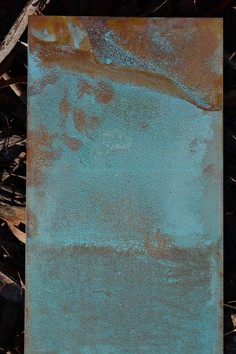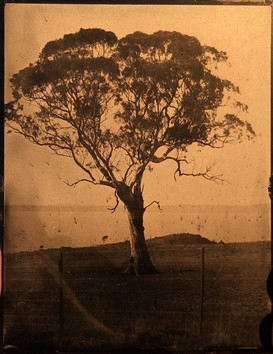Handheld: on Sidney McMahon
by Daniel Mudie Cunningham
A written work
Handheld: on Sidney McMahon
by Daniel Mudie Cunningham

A written work
Sidney McMahon, Untitled #1 from the series Of hope and longing (detail) 2020, Indian ink on Fabriano watercolour paper, 60 x 42 cm (series of 10)
Sidney McMahon, Untitled #1 from the series Of hope and longing (detail) 2020, Indian ink on Fabriano watercolour paper, 60 x 42 cm (series of 10)
Handheld: on Sidney McMahon
by Daniel Mudie Cunningham
A written work
I’m not playing two different people, I’m playing one. The Garth Brooks thing is just who I am. The Chris Gaines thing though – the closer you look and the more you find out, you realise, Chris Gaines is Garth Brooks. All it is, is a stretching of the arms.
In 1999, country music megastar Garth Brooks designed a rock and roll stage persona for himself called Chris Gaines, who fictitiously hailed from Brisbane as the son of Olympic swimming coach father and Commonwealth Games medallist mother. Bizarre and perplexing, the Gaines mythology was scripted through songs, music videos, a screenplay for a never-to-be-made film, and a mock Behind the Music special for VH1. Diehard Brooks fans were confused by his self-indulgent detour into rock, prompting Will Loomis to dub Brooks an “alteregomaniac”, “a glorified karaoke singer” and “just an actor playing at rock the same way he played at country”.
Some years later in the first decade of the new century, a porn star emerged called Girth Brooks. Short-lived appearances in straight porn led to a more prolific ‘gay for pay’ career lasting around a decade (during a period that saw the major porn studios transformed by the internet and its proliferation of amateur content). Writing on the ‘gay for pay’ scene, former porn performer and scene partner with Brooks, Conner Habib, says: “If there’s one thing I want to remember, if there’s one thing I want all of us to remember, it’s that within each one of us, there are so many people. Porn is generous in this way – it’s a world of doubles. Girth Brooks is not really Girth Brooks, after all.” Correct. According to internet gossip, Girth Brooks is Michael Gexler, a Massachusetts born and based ‘family man’, now married with kids and making it big in real estate.
--
Sidney McMahon’s exhibition Of hope and longing at Goulburn Regional Art Gallery is rich in allusions to country music and its conflicted and fraught relationship to queer desire. When McMahon references Garth Brooks as one of many inspirations for this body of work, my attention inevitably drifts to Girth Brooks, a cowboy for porn. In blurring straight and gay, Girth Brooks sustains a commonplace fantasy that paradoxically queers hypermasculinity at the same time it reinstates its normativity. To loosely (and crudely) update Loomis: “just an actor playing at cock the same way he played at cunt.”
Country music is a site where contradictions abound. The amplification of a camp sensibility runs parallel to the rampant homophobia and misogyny of country. Authenticity and artifice endure as intersecting hallmarks that co-exist in country music precisely because authenticity is a fabrication, worn like a costume, a form of drag, a copy of a copy. A case in point, Dolly Parton once losing a Dolly Parton lookalike contest.
“Wrap my heart around your little finger,” sings Dolly Parton in Here You Come Again. McMahon quotes this lyric in a ten-part drawing that forms the core of the installation. Speaking to desire, longing and the body, McMahon inscribes poetic text fragments over simple line drawings of hands in liminal states of suspension. Open and craving connection, the hand is a vessel and conduit for touch. But on closer inspection, each hand is defective with six digits, othered and unnatural, yet powerful in its display of vulnerability and difference.
As Covid-19 forced lockdown on the world, McMahon adapted and pared back their original plan for this exhibition, integrating a series of three performances for Instagram that use a render of the gallery space created by Celeste Stein, populated with digital sculptures, computer desktop imagery and a commissioned soundscape by Hayley Forward. For the first of the performances, McMahon invited the local Goulburn community to engage by submitting drawings, videos and photos, as matter that was woven into the digital fabric of these performances. A melancholic but compromised longing to touch, expressed through gesticulating fingers, set the scene for the social distancing built into its revised handheld delivery.
While artists and galleries worldwide have responded in various ways to Covid-19 related self-isolating, it goes without saying that in making their work artists are accustomed to the vicissitudes of solitude. Drawing from the discontents of growing up in rural Queensland, McMahon mashes the aesthetics of country music with the materiality of agricultural life. Abstracting emotional residue from childhood memory, McMahon foregrounds how it is within remote places that the weight of loneliness and isolation can press harder for queer youth who look to popular culture to shape a frame of reference. While emblematic of McMahon’s experience, this recognisable narrative is contested through a workshop-led collaboration with Goulburn’s young LGBTIQA+ community under the pseudonym, The Creepy Little Lemon Kids.
--
Sensitively curated by Gina Mobayed, Of hope and longing is McMahon’s first major presentation in a public gallery. Such an undertaking is a big deal moment for any artist, a bold and decisive transition from emerging to mid-career. During the development of the work and facing gallery-driven deliverables, McMahon grappled with their own sense of self and identity formation. It was at this point the artist changed their first name to Sidney and adopted non-binary pronouns: a deadline inciting a deadname.
Curiously, Of hope and longing wrestles with binary logic as the artist settles into a newfound relationship with the world as Sidney McMahon.
McMahon’s visual language emerges from an inheritance of images and ideas wrapped up in the complexities of persona. McMahon reaches into country’s hall of fame, its world of doubles and masquerades, its longing not simply to be, but to become. Exploding expectations through pictorial fragmentation, mnemonic association and poetic abstraction, Sidney McMahon encapsulates their experience in a rusted hacksaw adorned with a teetering floral garland: tender yet perilous.
Daniel Mudie Cunningham
27 May 2020
--
Daniel Mudie Cunningham is a curator, writer and artist. Currently, he is Director of Programs at Carriageworks. This essay has been commissioned by Goulburn Regional Art Gallery
Related Events
Episode Three: 'Giving you everything' by Sidney McMahon
Episode Two: 'These wet links' by Sidney McMahon
Episode One ‘I long for you’ by Sidney McMahon
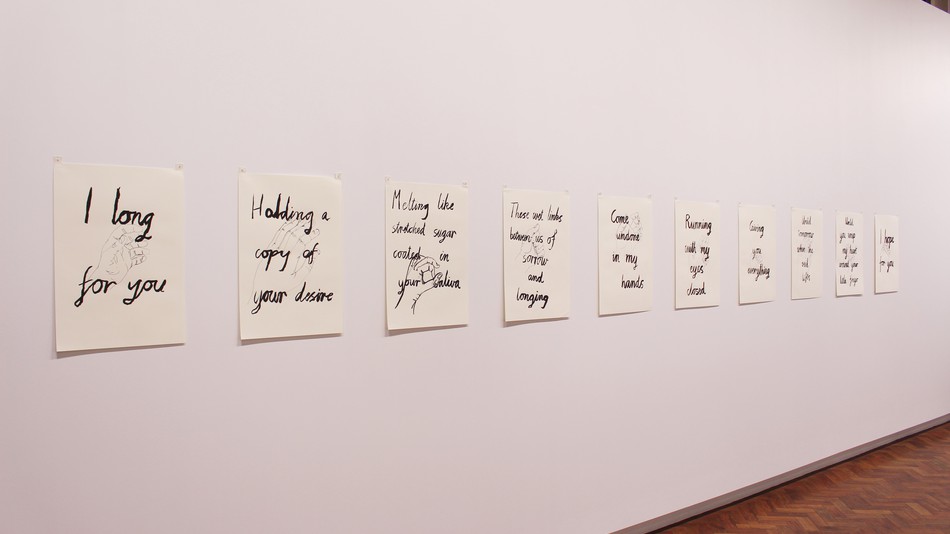

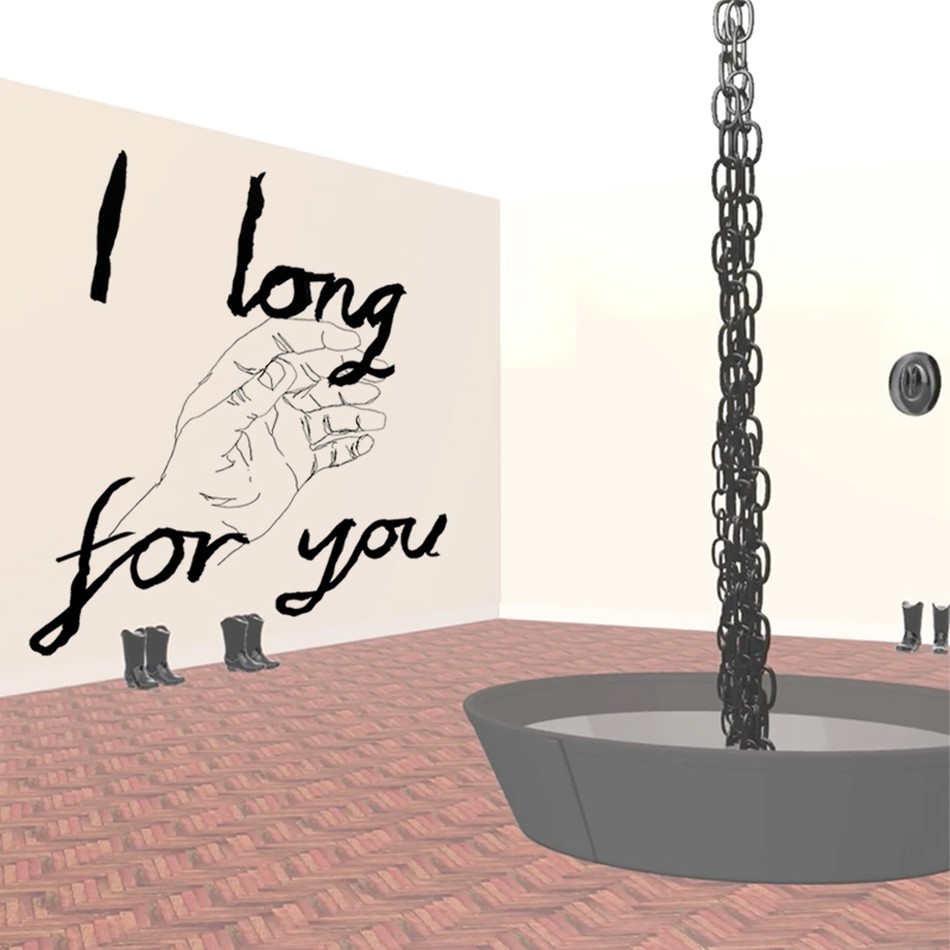
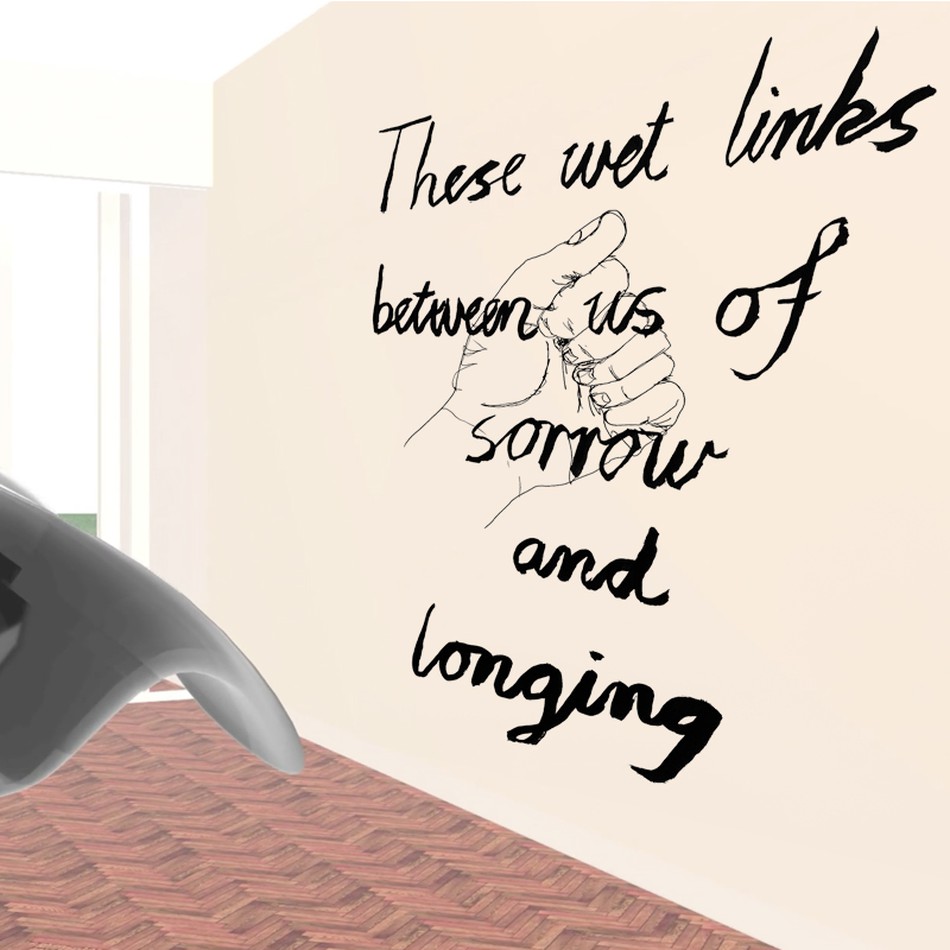

5
SIdney McMahon, Untitled #1 from the series Of hope and longing, Indian ink on Fabriano watercolour paper, 60 x 42 cm (series of 10)
Sidney McMahon, Untitled #5 from the series Of hope and longing 2020, hacksaw, roses, dimensions variable
Sidney McMahon and Celeste Stein, still from 3D render of Goulburn Regional Art Gallery for Episode one, 'I long for you', 2020
Sidney McMahon and Celeste Stein, still from 3D render of Goulburn Regional Art Gallery for Episode two, 'These wet links', 2020
Sidney McMahon and Celeste Stein, still from 3D render of Goulburn Regional Art Gallery for Episode three, 'Giving you everything', 2020
Sidney McMahon, Untitled #1 from the series Of hope and longing (detail) 2020, Indian ink on Fabriano watercolour paper, 60 x 42 cm (series of 10)
Handheld: on Sidney McMahon
by Daniel Mudie Cunningham
A written work
I’m not playing two different people, I’m playing one. The Garth Brooks thing is just who I am. The Chris Gaines thing though – the closer you look and the more you find out, you realise, Chris Gaines is Garth Brooks. All it is, is a stretching of the arms.
In 1999, country music megastar Garth Brooks designed a rock and roll stage persona for himself called Chris Gaines, who fictitiously hailed from Brisbane as the son of Olympic swimming coach father and Commonwealth Games medallist mother. Bizarre and perplexing, the Gaines mythology was scripted through songs, music videos, a screenplay for a never-to-be-made film, and a mock Behind the Music special for VH1. Diehard Brooks fans were confused by his self-indulgent detour into rock, prompting Will Loomis to dub Brooks an “alteregomaniac”, “a glorified karaoke singer” and “just an actor playing at rock the same way he played at country”.
Some years later in the first decade of the new century, a porn star emerged called Girth Brooks. Short-lived appearances in straight porn led to a more prolific ‘gay for pay’ career lasting around a decade (during a period that saw the major porn studios transformed by the internet and its proliferation of amateur content). Writing on the ‘gay for pay’ scene, former porn performer and scene partner with Brooks, Conner Habib, says: “If there’s one thing I want to remember, if there’s one thing I want all of us to remember, it’s that within each one of us, there are so many people. Porn is generous in this way – it’s a world of doubles. Girth Brooks is not really Girth Brooks, after all.” Correct. According to internet gossip, Girth Brooks is Michael Gexler, a Massachusetts born and based ‘family man’, now married with kids and making it big in real estate.
--
Sidney McMahon’s exhibition Of hope and longing at Goulburn Regional Art Gallery is rich in allusions to country music and its conflicted and fraught relationship to queer desire. When McMahon references Garth Brooks as one of many inspirations for this body of work, my attention inevitably drifts to Girth Brooks, a cowboy for porn. In blurring straight and gay, Girth Brooks sustains a commonplace fantasy that paradoxically queers hypermasculinity at the same time it reinstates its normativity. To loosely (and crudely) update Loomis: “just an actor playing at cock the same way he played at cunt.”
Country music is a site where contradictions abound. The amplification of a camp sensibility runs parallel to the rampant homophobia and misogyny of country. Authenticity and artifice endure as intersecting hallmarks that co-exist in country music precisely because authenticity is a fabrication, worn like a costume, a form of drag, a copy of a copy. A case in point, Dolly Parton once losing a Dolly Parton lookalike contest.
“Wrap my heart around your little finger,” sings Dolly Parton in Here You Come Again. McMahon quotes this lyric in a ten-part drawing that forms the core of the installation. Speaking to desire, longing and the body, McMahon inscribes poetic text fragments over simple line drawings of hands in liminal states of suspension. Open and craving connection, the hand is a vessel and conduit for touch. But on closer inspection, each hand is defective with six digits, othered and unnatural, yet powerful in its display of vulnerability and difference.
As Covid-19 forced lockdown on the world, McMahon adapted and pared back their original plan for this exhibition, integrating a series of three performances for Instagram that use a render of the gallery space created by Celeste Stein, populated with digital sculptures, computer desktop imagery and a commissioned soundscape by Hayley Forward. For the first of the performances, McMahon invited the local Goulburn community to engage by submitting drawings, videos and photos, as matter that was woven into the digital fabric of these performances. A melancholic but compromised longing to touch, expressed through gesticulating fingers, set the scene for the social distancing built into its revised handheld delivery.
While artists and galleries worldwide have responded in various ways to Covid-19 related self-isolating, it goes without saying that in making their work artists are accustomed to the vicissitudes of solitude. Drawing from the discontents of growing up in rural Queensland, McMahon mashes the aesthetics of country music with the materiality of agricultural life. Abstracting emotional residue from childhood memory, McMahon foregrounds how it is within remote places that the weight of loneliness and isolation can press harder for queer youth who look to popular culture to shape a frame of reference. While emblematic of McMahon’s experience, this recognisable narrative is contested through a workshop-led collaboration with Goulburn’s young LGBTIQA+ community under the pseudonym, The Creepy Little Lemon Kids.
--
Sensitively curated by Gina Mobayed, Of hope and longing is McMahon’s first major presentation in a public gallery. Such an undertaking is a big deal moment for any artist, a bold and decisive transition from emerging to mid-career. During the development of the work and facing gallery-driven deliverables, McMahon grappled with their own sense of self and identity formation. It was at this point the artist changed their first name to Sidney and adopted non-binary pronouns: a deadline inciting a deadname.
Curiously, Of hope and longing wrestles with binary logic as the artist settles into a newfound relationship with the world as Sidney McMahon.
McMahon’s visual language emerges from an inheritance of images and ideas wrapped up in the complexities of persona. McMahon reaches into country’s hall of fame, its world of doubles and masquerades, its longing not simply to be, but to become. Exploding expectations through pictorial fragmentation, mnemonic association and poetic abstraction, Sidney McMahon encapsulates their experience in a rusted hacksaw adorned with a teetering floral garland: tender yet perilous.
Daniel Mudie Cunningham
27 May 2020
--
Daniel Mudie Cunningham is a curator, writer and artist. Currently, he is Director of Programs at Carriageworks. This essay has been commissioned by Goulburn Regional Art Gallery
Related Events
Episode Three: 'Giving you everything' by Sidney McMahon
Episode Two: 'These wet links' by Sidney McMahon
Episode One ‘I long for you’ by Sidney McMahon





5
SIdney McMahon, Untitled #1 from the series Of hope and longing, Indian ink on Fabriano watercolour paper, 60 x 42 cm (series of 10)
Sidney McMahon, Untitled #5 from the series Of hope and longing 2020, hacksaw, roses, dimensions variable
Sidney McMahon and Celeste Stein, still from 3D render of Goulburn Regional Art Gallery for Episode one, 'I long for you', 2020
Sidney McMahon and Celeste Stein, still from 3D render of Goulburn Regional Art Gallery for Episode two, 'These wet links', 2020
Sidney McMahon and Celeste Stein, still from 3D render of Goulburn Regional Art Gallery for Episode three, 'Giving you everything', 2020
